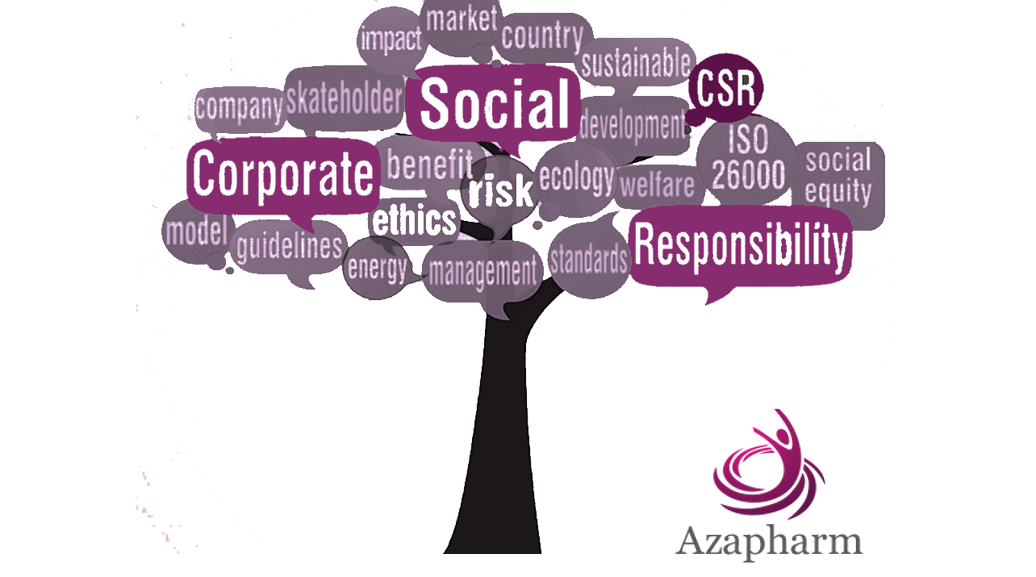
What is the real meaning of implementing social impact in the healthcare sector, an already people-oriented and meaningful-vision-industry?
What is social impact?
Social impact can be defined as a significant, positive change that addresses a pressing social challenge. Creating social impact is the result of a deliberate set of activities with a goal matching this definition.
Among the Sustainable Development Goals adopted by all United Nations Member States in 2015, a blueprint to achieve a better and more sustainable future for all, we can find the goal #3 “ensure healthy lives and promote well-being at all ages”.
This goal is naturally embedded in the DNA of the healthcare industry, which has improved the health of millions of people, increasing life expectancy, eradicating a wide range of diseases and addressing many different emerging health issues.
Yet, the healthcare industry is still a commercial one, and as such it must always balance profitability and sustainability. While for some, maintaining this balance might seem a little tricky at time, we firmly believe that managing and measuring social impact contribution to the Sustainable Development Goals is not only compatible with earning long term returns, but has become essential to it. Doing good and doing well go hand-in-hand, we can no longer imagine a sustainable future and see companies prosper long-term financially if social challenges are not addressed.
Social impact and return on investment
In a globally connected world, people want to invest in, and work for companies that are making a positive contribution to addressing the world’s social and environmental challenges. More and more people look for meaning in how they make their living, they choose professions and workplaces by their values and the human asset in them.
Social impact is therefore not just a trend. Today, the market of social impact is estimated to be worth $715bn, according to the Global Impact Investing Network, a non-profit group.
Pharmaceutical companies and the large healthcare industry have shown over the years their potential to radically and positively impact society. The reason they exist and their accomplishments seem in sync with the social impact spirit.
What’s the meaning of social impact in an industry like healthcare?
In an industry that increases life expectancy, eradicates and/or eliminate diseases, employs millions of people and boosts the global economy, this leaves us with a big question mark: in the healthcare sector, doesn’t the implementation of this concept of social impact seem redundant? In other words, isn’t it already ingrained in these companies’ DNA? What is its real meaning in an industry that thrives to impact the quality of life and the lives of billions of people all around the world?
We cannot ignore the fact that at times the race for profit has gotten in the way of the do no harm principle. Some corporate players have hidden behind the veil of groundbreaking scientific discoveries to prioritize profits.
In one of the latest events, the global pharmaceutical company Novartis agreed to pay $729 million to settle allegations that it offered kickbacks to doctors and illegal copayment support to Medicare patients to boost its drugs’ sales.
We can also point out a crying lack of transparency about pharmaceutical supply in chains, when for example, asked recently, Sanofi and Roche did not monitor the discharge made by their external waste treatment plants.
Over the last few years, events have led to more scrutiny and control by the authorities.
When healing is not the best business model
Even though companies do everything by the book, reconciling medical innovation and return on investment is not that simple.
Pharmaceutical companies are governed by the rules of economics like any other company, and ironically, healing and eradicating a disease don’t constitute a sustainable business model.
The development process of treatments is long, the scientific outcomes are uncertain, the regulatory pathway is stringent and the patents fall into public domain after 20 years.
Even though governments have created incentives that offer extra time for companies which develop, for instance, treatments for orphan or pediatrics diseases issues, the monopoly is ultimately lost, taking with it future financial returns.
The societal impact of curative therapies
Goldman Sachs in their report, Genome Revolution, talks about the huge societal impact of (potentially) curative therapies : “The ability to deliver single cures is one of the most attractive aspects of gene therapy, genetically modified cell therapy, and gene editing, but these treatments offer very different prospects in terms of recurring revenue compared to chronic therapies […] While this innovation has enormous value for patients and society, it could represent a challenge for genomic drug developers seeking sustained cash flow”.
For example, Gilead Science’s breakthrough direct-acting antiviral treatments, Sovaldi and its successors for chronic hepatitis C achieved a cure rate of more than 95%, saving health systems millions by helping to cure hepatitis C patients and preventing them from progressing to liver failure. However, the success of this treatment gradually exhausted the available pool of treatable patients and consequently, the company’s sales peaked at $19.14 billion in 2015, and have been falling ever since.
Is the balance between impactful medical innovation and return on investment impossible to reach?
While the situation may present more perils than opportunities, social impact enables the creation of the missing framework to implement a sustainable change.
Investing in companies that have integrated social impact into their missions and operational activities doesn’t mean sacrificing on solid returns. On the contrary, the number of companies that do good and still have a significant return on investment is increasing.
The data on such companies is widely used today by investors to make an informed choice. Factors that cause companies to receive low ESG scores (environmental, social, and governance data), information about companies’ carbon footprints, labor policies, board makeup, and so forth are considered as they will potentially result in weak financial results.
A few examples of companies that managed to balance social impact with good business
Vertex Pharmaceuticals
Among the Investor’s Business Daily‘s 50 Best ESG Companies list, we can find Vertex Pharmaceuticals.
This global biotechnology company announces in its 2019 Corporate Responsibility report that they met and exceeded their goal on global emissions data with 39% global carbon reduction, 4% higher than the bar they had set 4 years before.
They invest heavily in R&D and focus on diseases in specialty markets, where they can bring medicines to patients with a relatively small sales and marketing budget. In fact, 73% of business operating expenses are invested in R&D.
Beside their careful management of their environmental footprint, their priorities include also a corporate culture that embraces innovation, diversity and authenticity as well as a positive impact on the communities they are based.
Through a strategy of pursuing expanded regulatory approvals that make its drugs available to an ever-wider patient population, Vertex has achieved impressive revenue growth. The company has been consistently profitable.
Scott Boyer
The unique example of Scott Boyer’s Pharmaceutical Social Enterprise illustrates a sustainable and profitable business model that also does good work.
In 2014, Scott Boyer took an interest in epilepsy, one of the most serious chronic neurological diseases according to the WHO. He noticed that very effective, low-cost drugs were available to epilepsy patients fortunate enough to live in the right countries, but the majority of the world’s epilepsy patients (40 out of 50 million) lived in low and middle-income regions and at best 25 percent of them are diagnosed and treated, leaving 30 million patients untreated.
Scott Boyer created a complex social business model, a symbiotic partnership between a for-profit business and a charitable foundation: OWP Pharmaceuticals and the ROW Foundation. He explained in an interview: “Our branded generics offer highly consistent and reliable medications at very affordable prices. We can significantly reduce the expense of medication from the patented versions and at the same time fund assistance to people in need through the ROW Foundation”.
The founder of OWP decided from the outset that he wanted to sustainably fund the nonprofit foundation.
One way to do it is that all shares carry an “option” provision that guarantees ROW the right to acquire up to 50 percent of the outstanding shares, based on an annual evaluation. Between purchasing 50 percent of shares and acquiring additional shares as charitable contributions, the ROW Foundation will begin receiving a majority of OWP Pharmaceutical dividends within a few years, and regular dividends will fuel ROW’s philanthropic programming in under-resourced areas around the world.
In its first year, the foundation raised $25,000 to give to the Armenian League Against Epilepsy (ALAE) in order to purchase EEG equipment for a pediatric hospital in Yerevan.
OWP Pharmaceutical Inc. is still thriving and has announced this year that it has submitted for U.S. patent protection, for the first-ever powder for oral liquid formulation of duloxetine hydrochloride, for the treatment of major depressive and generalized anxiety disorder.
Social business initiatives of pharmaceutical companies constitute another example of a sustainable change. The model on some of the programs relies on a single reinforcing feedback loop which hypothesizes that improving access to needed medicines among the poor improves health status, which in turn improves economic activity and household income, increasing the available financial resources to purchase medicines. If the medicines purchased are the ones from the company’s program, this feedback loop will generate profit for the company, which can be invested in expanding the program.
A Message of hope
Social impact is not just a utopian vision. It can be achieved in any sector. Implementing it in the healthcare sector is not irrelevant or redundant. If anything, it is even more important because it is so ingrained in the DNA of life science and healthcare companies. A consequent mindset shift is necessary and essential to deliver social, sustainable and profitable change, but it can be balanced with profit. There is room for innovation, not only in the healthcare services and products, but also in the business models and communication strategies of these companies.



